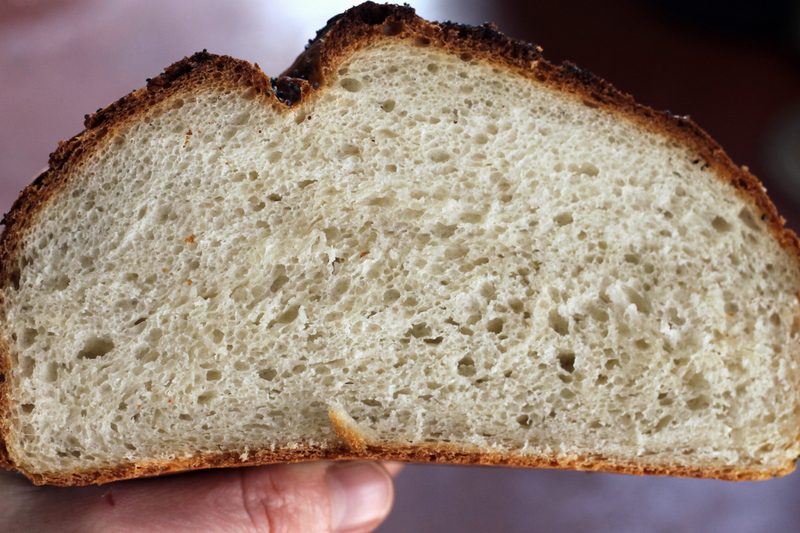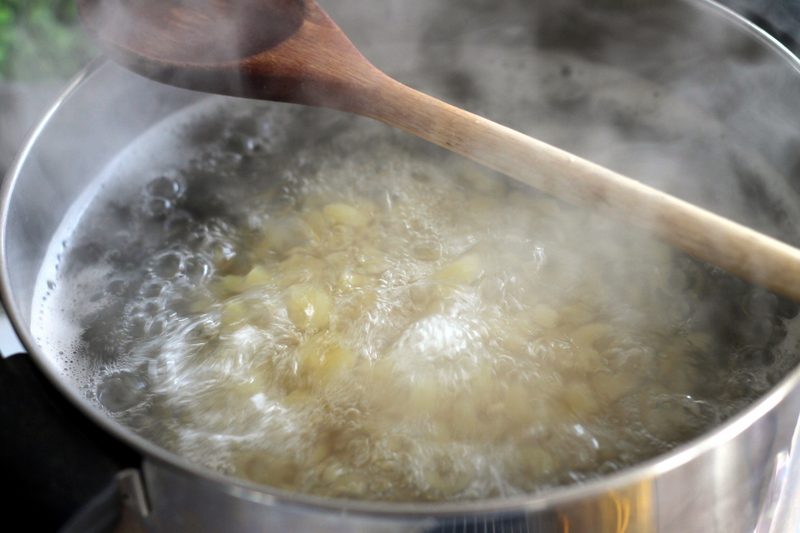When my younger son gets an idea in his head, he does not let go of it until it becomes a reality. Watching The Great British Baking Show (there’s a season three!!!), he got it in his noggin that he wanted to bake. “I’ll make crackers,” he said. “I’ll just mix up some flour, water, and salt and then roll out the dough.”
“That’s not how you make crackers,” I said. “You’ll need a recipe.”
“But I don’t want to follow a recipe. I want to make it my way.”
Which was exactly what I was afraid of: a big mess with nothing to show for it. I kept putting him off but of course he only pushed harder. Sick of the fussing, my husband muttered, “Come on, Jen. Just let him make something, why don’t you.”
“Fine,” I told my son. “You can make bread. Papa says he will teach you.”
My husband glared at me, but his mouth stayed shut.
They made the bread on a Saturday morning. Even with my husband in the kitchen, the boy kept coming to me with his questions. Ask Papa, I said over and over, each time getting a little thrill from deflecting the questions. Teaching a kid to bake bread is amazingly relaxing when I’m not the one teaching!
The boy handled the dough with an assuredness that I hadn’t anticipated, the mess was minimal, and the bread delicious. So a couple days later, I told him to make another batch. He was thrilled, and once again, the bread was a raging success.
Beginner’s Bread
(Otherwise known as Cuban Bread)
Adapted from Bernard Clayton’s New Complete Book of Breads.
The shaped loaves go straight into a cold oven and rise as the oven warms, which means that, with no hot oven to fuss with, this bread is a great one for young beginners. Plus, it’s a crowd pleaser—the rave reviews are sure to make any novice feel like an old pro.
5-6 cups bread flour
2 tablespoons yeast
1 tablespoon salt
2 tablespoons sugar
2 cups hot tap water
sesame or poppy seeds for garnish, optional
In a large bowl, mix four cups of the flour with the yeast, salt, sugar, and hot water. Gradually add more flour, as much as you need to make a soft dough. Knead the dough for 5-10 minutes.
Flour the dirty bowl, place the dough in it, and cover the dough with a cloth. Let it rise until double.
Divide the dough in half and shape each piece into a round. Place the rounds, smooth sides up, on a parchment-lined baking sheet. If using seeds, spritz the dough with water and sprinkle the seeds on top. Slash the top of each loaf.
Place a pan of hot water on the bottom rack of a cold oven. Place the pan of bread on the rack above. Turn the oven to 400 degrees and set the time for about 30 minutes. When the timer goes off, rotate the bread (if the loaves are getting too dark, cover them with foil) and continue baking for another 10-20 minutes.
This same time, years previous: scatteredness, the quotidian (4.11.16), oh please, millet muffins, oatmeal raisin cookies, the greening, answers, the quotidian (4.6.13), yellow cake.




















